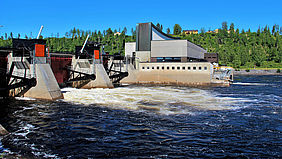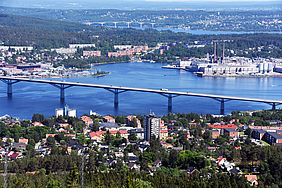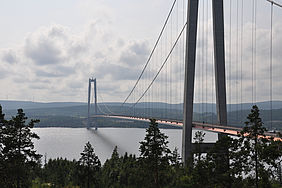What is the regional energy situation of the SMARCTIC project partners? This week we travel to Västernorrland region in Sweden to find out more about the main sources of energy for light, heat and other essential public/domestic services and renewable resources that are locally/regionally available.
Let’s have a closer look at this area. Västernorrland has 21 678 km² and is sixth biggest administrative region in Sweden with a population of 245 081 (March 2020). Geographically, it is located exactly in the middle of the country! The geographical midpoint of Sweden lies 60 km west from the biggest city, Sundsvall, the biggest city in the region. Kramfors, where the SMARCTIC project pilot is going to be implemented, is almost the least populated municipality with only 18 200 inhabitants in March 2020.
Our project partner Marta Bystrowska, from Region Västernorrland, explains that this is one of the counties/regions in Sweden with the highest share of renewable electricity per inhabitant. Hydropower accounts for most of the electricity production in the region today. One of the most important rivers in the region is Ångerman river, one of the biggest in the country (both in terms of length and amount of water) and a good river for hydropower activities. Furthermore, there are 15 hydropower plants on the river. It passes Kramfors, a key location for the SMARCTIC project.
Nevertheless, the use of wind power is increasing the most. Västernorrland possesses two of Sweden's three municipalities with the most wind power installations: Sollefteå municipality and Örnsköldsvik municipality. In total, 772 MW of wind power was installed in Västernorrland in 2018, making Västernorrland the third largest wind power region in Sweden. “Hydroelectric power and wind power are biggest electricity sources. Solar energy is relatively little share of the energy, but it has been growing in the recent years”, mentions Marta.
Solar energy holds a relatively little share of the energy-mix in Västernorrland, but growing interest in solar panels can be observed in the recent years. The proportion of green energy in the form of fossil-free and renewable electricity generation in the county amounts to close to 100%. For the whole of Sweden, in 2018, a total of 556 TWh of energy was used. The largest use of energy was in housing and service, followed by industry. The most common energy carriers were electricity which amounted to 126 TWh and biofuel to 88 TWh. Sweden's electricity generation consists largely of hydropower and nuclear power. Together, they account for 80% of total electricity production. The rest is produced with, inter alia, wind power, cogeneration, and condensation heat.
The SMARCTIC project aims to promote a new innovative approach to reducing energy usage in the Northern Periphery and Arctic area, whilst increasing the uptake of renewable energy sources. The project provides an opportunity for project partners to share valuable knowledge, enabling other NPA regions to learn from Västernorrland’s exemplary use of renewable resources to provide heat, light and other essential public/domestic services.
Read more:




